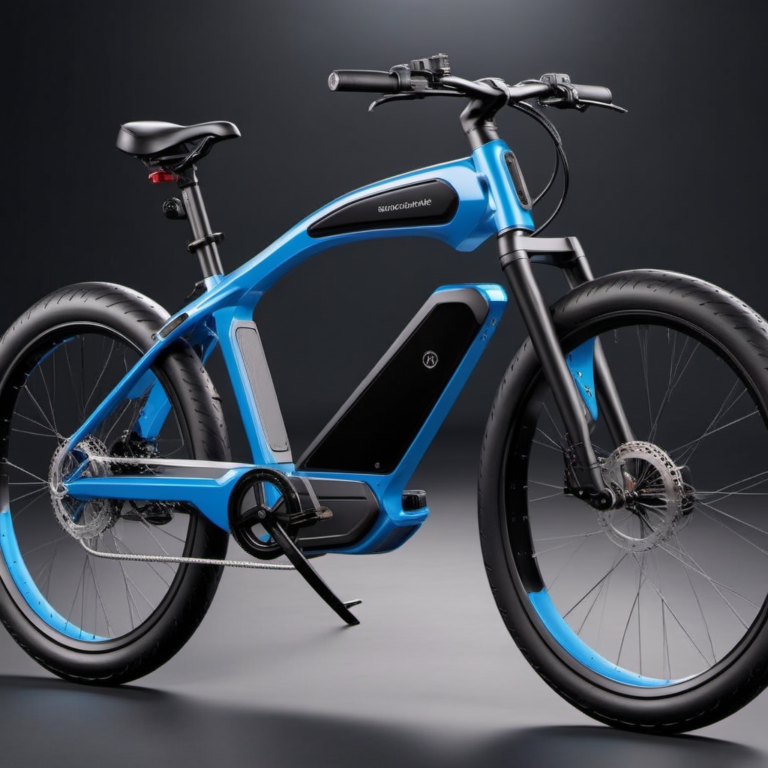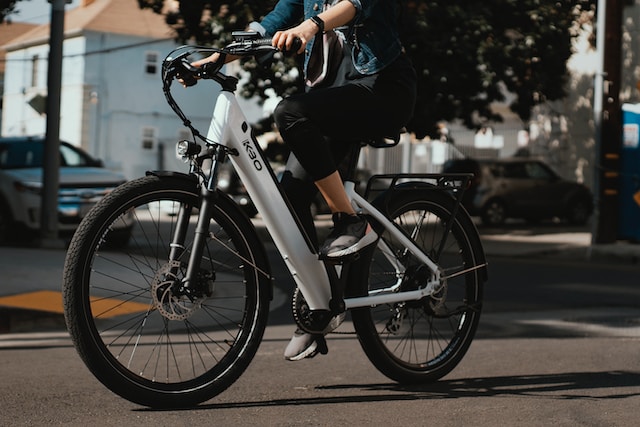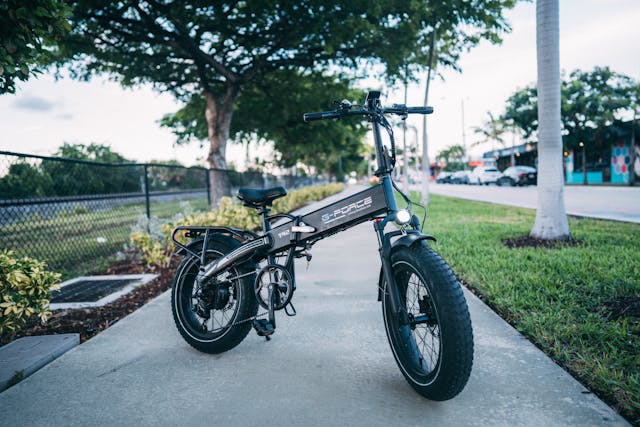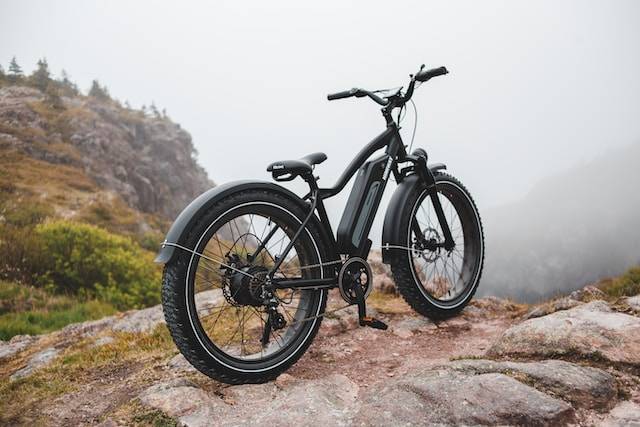Navigating Power Bank Regulations for Electric Bikes
Electric bikes (e-bikes) have emerged as a revolutionary mode of transportation, blending the convenience of cycling with the efficiency of electric propulsion. With their rising popularity, riders are constantly seeking ways to enhance their e-bike experience, and power banks have become integral to this pursuit.
In recent years, the role of power banks in the realm of electric bikes has garnered significant attention. These portable energy storage devices offer riders the flexibility to extend their e-bike’s range, providing an added layer of convenience and utility. Whether for longer commutes, off-grid adventures, or simply as a backup power source, power banks have become indispensable companions for many e-bike enthusiasts.
However, the integration of power banks into the e-bike ecosystem brings forth a crucial consideration: regulations and restrictions. As with any technological advancement, the use of power banks with electric bikes is subject to various legal frameworks and safety standards. Understanding these regulations is paramount not only for ensuring compliance but also for promoting safety and sustainability within the e-bike community.
In this comprehensive guide, we delve into the intricate landscape of power bank regulations for electric bikes. We aim to provide clarity and insights into the legalities surrounding power bank usage with e-bikes. Through this exploration, riders can navigate the regulatory framework with confidence, enabling them to maximize the benefits of power banks while abiding by the law.
Key Takeaways
- Understanding local regulations is crucial for legal and safe use of power banks with electric bikes.
- Always adhere to capacity and safety guidelines specified for power banks and e-bike batteries.
- Check for any specific restrictions in public areas or national parks before using power banks.
- Ensure compliance with charging regulations, especially while riding or in public spaces.
- Stay informed about updates or changes in regulations to avoid legal complications.
- Consider eco-friendly alternatives like solar-powered power banks, where applicable and permitted.
- Consult local authorities or experts for clarification on ambiguous regulations or gray areas.
Understanding the Legalities
In the realm of electric bikes, adherence to regulations isn’t merely a matter of legal compliance; it’s a fundamental aspect of ensuring both safety and integrity within the e-bike community. These regulations serve as guardrails, guiding riders towards responsible and lawful usage of their electric bicycles, including the incorporation of power banks.
Importance of Adhering to Regulations
First and foremost, understanding and adhering to regulations surrounding power bank usage with electric bikes is essential for fostering a culture of safety. Regulations are designed to mitigate potential hazards and risks associated with the integration of power banks into e-bike systems. By following these guidelines, riders can minimize the likelihood of accidents, malfunctions, or other safety concerns, thus safeguarding themselves and others on the road.
Moreover, compliance with regulations ensures legal validity. Operating an e-bike equipped with a power bank in accordance with local laws provides riders with peace of mind, knowing that they are engaging in lawful and responsible behavior. This not only mitigates the risk of fines or penalties but also promotes a positive image of e-bike riders as law-abiding members of the community.
Highlighting Potential Consequences
Disregarding regulations governing power bank usage with electric bikes can have far-reaching consequences, both in terms of safety and legality. From a safety standpoint, non-compliance with regulations increases the risk of accidents or equipment failures, potentially resulting in injury to the rider or others. Faulty installation, exceeding weight limits, or using incompatible power banks can compromise the stability and performance of the e-bike, posing significant hazards on the road.
Furthermore, overlooking regulations may expose riders to legal liabilities. Operating an e-bike in violation of local laws regarding power bank usage can lead to fines, citations, or even legal action. Beyond the financial implications, such infractions can tarnish one’s reputation and credibility within the e-bike community, undermining trust and cooperation among riders.
Understanding the legalities surrounding power bank usage with electric bikes is not merely a matter of compliance; it’s a commitment to safety, responsibility, and respect for the law. By prioritizing adherence to regulations, riders can enjoy the benefits of power banks with confidence, knowing that they are contributing to a safer and more harmonious e-bike environment.
RELATED CONTENT – Charging an Ebike with a Power Bank
RELATED CONTENT – Rules of the Road: Where Can You Ride Your Electric Bike?
Regulations and Restrictions in Different Areas
Understanding the regulatory landscape surrounding power bank usage with electric bikes requires an examination of regional or national regulations, which can vary significantly across different jurisdictions. By exploring these regulations and highlighting the differences, riders can ensure compliance and safety regardless of where they ride.
Examination of Regional or National Regulations
Regulations governing power bank usage with electric bikes are often established at the regional or national level, reflecting the unique priorities, infrastructure, and safety considerations of each jurisdiction. These regulations typically outline requirements and restrictions related to power bank capacity, compatibility, and usage scenarios.
For example, some regions may impose strict capacity limits on power banks used with electric bikes to mitigate safety risks associated with overloading or overheating. Others may require power banks to undergo certification processes to ensure compliance with safety standards and specifications.
Highlighting Differences in Regulations
One of the key challenges facing e-bike riders is the diverse and sometimes conflicting regulations across different jurisdictions. While some regions may have comprehensive and clear regulations governing power bank usage with electric bikes, others may have more ambiguous or outdated guidelines.
Differences in regulations can manifest in various ways, including:
- Capacity Limits: Some jurisdictions may impose specific capacity limits on power banks, restricting the maximum size or energy output allowed for use with electric bikes.
- Charging Restrictions: Certain regions may have regulations governing the permissible locations or methods for charging power banks while riding or in public spaces.
- Safety Standards: Regulations may vary in terms of safety standards and certifications required for power banks used with electric bikes, leading to disparities in product availability and compatibility.
- Usage Scenarios: Restrictions on where and how power banks can be used with electric bikes may vary, depending on factors such as urban infrastructure, environmental considerations, and public safety concerns.
By highlighting these differences, riders can gain a better understanding of the regulatory landscape and adapt their practices accordingly. This may involve researching and familiarizing oneself with local regulations, seeking guidance from authorities or experts, and exercising caution when crossing jurisdictional boundaries.
Ultimately, by staying informed and compliant with regulations, riders can enjoy the benefits of power bank usage with electric bikes while promoting safety, sustainability, and legal responsibility across diverse geographical contexts.
RELATED CONTENT – How Do I Properly Dispose or Recyle an Electric Bike Battery?
RELATED CONTENT- A Guide to Choosing the Right Electric Bike Battery
Safety Certification Standards for Electric Mobility Devices
Electric mobility devices, including e-bikes, are subject to rigorous safety certification standards to ensure the protection of riders and the public. Understanding these standards is essential for manufacturers, distributors, and users alike to ensure the safety and reliability of e-bikes and their components, including power banks. Let’s delve into some of the key safety certification standards specifically designed for electric mobility devices:
UL 2272 Certification
UL 2272 is a prominent safety certification standard developed by UL (Underwriters Laboratories) specifically for electric mobility devices, including e-bikes. This comprehensive standard evaluates the electrical and mechanical safety of these devices, encompassing various components such as batteries, power banks, motors, and control systems. Here’s what you need to know about UL 2272 certification:
- Scope: UL 2272 certification addresses a wide range of safety aspects, including protection against fire hazards, electrical malfunctions, structural failures, and other potential risks associated with electric mobility devices.
- Testing Procedures: The certification process involves rigorous testing procedures conducted by accredited testing laboratories. These tests assess the performance and safety features of e-bikes and their components under various conditions, ensuring compliance with stringent safety requirements.
- Criteria: UL 2272 sets forth specific criteria for evaluating the electrical system integrity, battery performance, thermal stability, structural integrity, and durability of electric mobility devices. Compliance with these criteria is essential for obtaining UL 2272 certification.
- Certification Mark: Products that successfully meet the requirements of UL 2272 certification can display the UL certification mark, indicating compliance with recognized safety standards. This mark instills confidence in consumers and demonstrates a commitment to safety and quality by manufacturers and distributors.
Other Relevant Certification Standards
In addition to UL 2272, there are other safety certification standards and regulations applicable to electric mobility devices and e-bikes. These standards may vary by region and jurisdiction, but they typically address similar safety concerns and requirements. Some examples include:
EN 15194 (Europe)
EN 15194 is a European standard specific to electrically power-assisted cycles (EPACs), including e-bikes. It outlines safety and performance requirements for EPACs to ensure their safe operation on European roads.
ASTM F2641 (United States)
ASTM F2641 is a standard developed by ASTM International for electrically powered bicycles, including safety requirements and test methods for evaluating the performance and durability of these bicycles.
Importance of Compliance
Compliance with safety certification standards is paramount for ensuring the safety, reliability, and legal compliance of e-bikes and their components. Manufacturers and distributors must adhere to these standards to protect consumers and mitigate potential risks associated with electric mobility devices. Likewise, users should prioritize purchasing certified e-bikes and components to ensure their safety and peace of mind while riding.
By adhering to safety certification standards, stakeholders in the e-bike industry contribute to the advancement of safety standards and the promotion of responsible e-bike usage. It is essential to stay informed about evolving standards and regulatory requirements to maintain the highest levels of safety and quality in the electric mobility sector.
FAQs
Answer: Yes, in many jurisdictions, using unauthorized power banks with electric bicycles can result in fines or penalties. These fines typically stem from violations of safety regulations or legal requirements governing e-bike equipment. To avoid fines, riders should ensure that any power banks used comply with local regulations and standards, including capacity limits and safety certifications.
Answer: Yes, in most cases, it is legal to use a power bank to extend the range of your electric bike. However, certain conditions must be met for legal compliance. These include ensuring that the power bank complies with local regulations and safety standards, as well as verifying compatibility with your e-bike’s electrical system. By adhering to these requirements, riders can legally use power banks to extend their e-bike’s range.
Answer: Yes, regulations for power bank usage on e-bikes can vary significantly from one country to another. Differences may exist in capacity limits, charging restrictions, safety standards, and usage scenarios. Riders should familiarize themselves with the laws and regulations governing e-bikes in their respective countries or regions to ensure legal compliance and safety.
Answer: Safety considerations when using power banks with electric bicycles include ensuring proper installation, avoiding overloading or overheating, and following manufacturer recommendations for charging and usage. Riders should also be aware of any specific safety guidelines outlined in local regulations and standards to mitigate potential hazards and ensure safe operation of their e-bikes.
Conclusion
Navigating the complex world of power bank regulations for electric bikes requires a comprehensive understanding of legal frameworks, safety standards, and regional variations. By exploring key concepts, addressing common queries, and highlighting the importance of compliance, riders can embark on their e-bike adventures with confidence and peace of mind.
As e-bike enthusiasts, it is our collective responsibility to prioritize safety, legality, and sustainability in our pursuits. By adhering to regulations, promoting responsible practices, and staying informed about evolving standards, we can contribute to a safer, more harmonious e-bike community for all.
Join the Conversation
We invite you to join the conversation! Have questions, insights, or experiences to share regarding power bank regulations for electric bikes? Comment below and let us know. Your input is valuable in fostering dialogue, sharing knowledge, and building a supportive community of e-bike enthusiasts. Don’t forget to share this guide with fellow riders who may benefit from its insights. Together, we can ride responsibly and enjoy the thrill of electric biking while respecting the rules of the road.
External Sources
- Government Websites: Many government agencies and departments responsible for transportation or consumer safety publish official guidelines and regulations pertaining to electric bikes and power bank usage. Websites such as the Department of Transportation (DOT) or the Consumer Product Safety Commission (CPSC) often provide valuable resources and legal documents for riders to consult.
- Industry Publications: Industry publications and websites dedicated to electric bikes and sustainable transportation offer in-depth analysis, news updates, and expert commentary on regulatory developments. Websites like Electric Bike Report or Bicycle Retailer & Industry News (BRAIN) frequently cover topics related to e-bike regulations and safety standards, providing valuable insights for riders.
- Expert Opinions: Seeking advice from experts in the field can offer valuable perspectives and guidance on power bank regulations for electric bikes. Professional organizations, academic institutions, and industry associations often feature articles, interviews, or webinars with experts who specialize in e-bike technology, safety, and regulation.
- Online Forums and Communities: Online forums and social media groups dedicated to electric bikes are excellent resources for engaging with fellow riders, sharing experiences, and seeking advice on regulatory matters. Platforms like Electric Bike Forums or Reddit’s r/ebikes community provide opportunities to connect with knowledgeable enthusiasts and industry professionals.
Kristina Grant is not just an enthusiast but a true authority on electric bikes. Nestled in the coastal beauty of Virginia, Kristina has found the perfect backdrop for her passion for electric biking. As a dedicated wife and homeschooling mom, her life revolves around family, faith, and the thrill of adventure.
Originally hailing from Ohio, Kristina's journey with electric bikes began as a curiosity and quickly evolved into a deep expertise. Her blog is a testament to her love for electric biking, combining her fascination for eco-friendly transportation with her coastal lifestyle.
When she's not cruising the beach on her electric bike, you'll find Kristina indulging in her other loves: long walks along the shore, getting lost in a good book, and cherishing moments with her loved ones. With a heart as big as her love for animals, especially cats, Kristina brings a unique perspective to the electric bike world, grounded in her strong faith in God and her dedication to a sustainable lifestyle.
Through her blog, Kristina shares her extensive knowledge of electric bikes, offering valuable insights, tips, and recommendations to fellow enthusiasts. Whether you're a seasoned rider or a newcomer to the electric bike scene, Kristina's blog is your go-to source for all things electric biking, fueled by her passion, expertise, and the scenic beauty of coastal Virginia.







